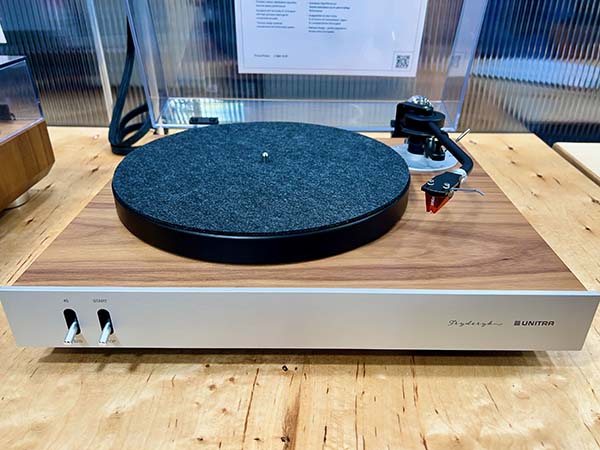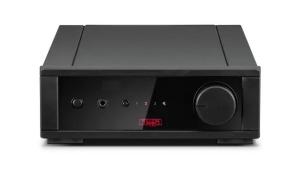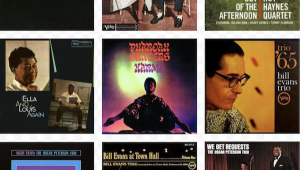Unitra Tell Us Why They’ve Gone All in on Direct-Drive Turntables
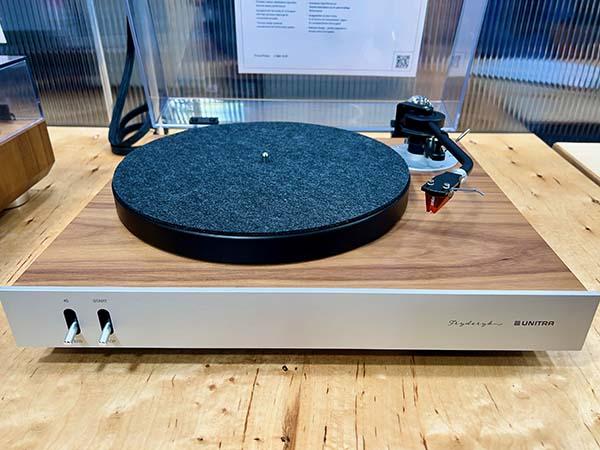
Unitra, a Polish hi-fi and turntable maker, began as a brand in 1961, but some of their production origins date back to 1945. Just after World War II, there were some factories in Poland manufacturing audio-video equipment, and those companies’ leadership decided to combine them into one big organization. This information came direct from Michal Glowczyk, Unitra’s CTO, who also spoke with me at High End Munich 2025 about the company’s approaches to designing direct-drive turntables that he believes have “huge advantages” over belt-driven turntables.
“It’s very difficult to design and develop a direct-drive,” he told me. “Many people like to make turntable designs more spectacular — adding five motors, five belts, tensions, and whatever — but the truth is, direct-drive is the best option.”

Speaking generally, he explained how feedback loops help you measure — and correct — the accuracy of the drive’s speed control. “It allows you to adjust the signal to control the motor in real time,” the CTO pointed out. “We have two feedback loops in our drive. One is the magnetic loop with three sensors; the other one is the optical.”
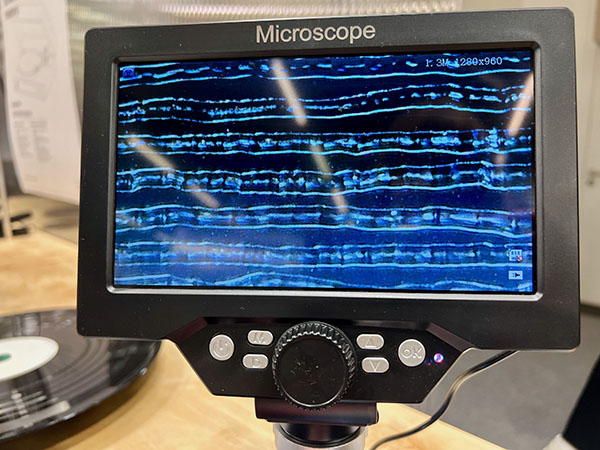
Comparing direct-drive tables to belt-driven tables, Glowczyk added, “If you have a belt drive, you have the motor, and one feedback loop might be from the motor. But you still have the belt in between more variables, [so] how do you measure how to do better on the platter’s rotation speed?” Because you still have something in between — the aforementioned belt — you’re not able to adjust the speed as quickly as with direct drive, he said.

I asked how they avoid motor noise or cogging. “We measure everything,” he replied. “There’s a great distance between the motor and the cartridge.”
He also noted that Unitra also use platter-damping material, and spoke of “some sophisticated hidden parts” that aren’t visible upon first glance that help with proper operation.
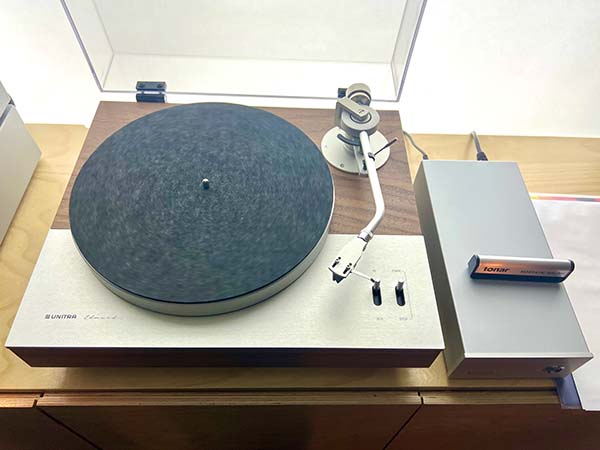
As for what we could see, Unitra showed a couple of their direct-drive tables on passive display in Halle 2 at Munich, including the GSH-630 Fryderyk turntable (€2,999; seen at the very top of this story) fitted with their R-10 tonearm, and the reference GSH-801 Edmund table with an R-10 arm and outboard power supply (€4,999; directly above).
There were additional displays including parts from their proprietary drive systems, a microscope showing record grooves, their measurements of distortion levels, and other characteristics. Each of their turntables comes with its own test report. Unitra also developed their own turntable test records: the WT-1 Standard Edition (€59), and WT-2 Laboratory Edition (€149).
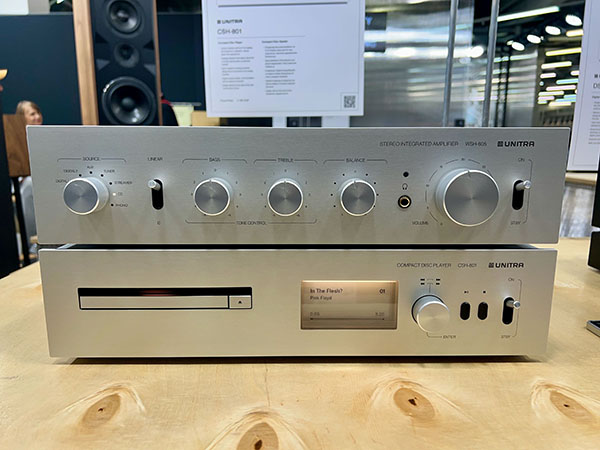
Unitra also had an active system on hand with a GSH-801 Edmund with R-10 tonearm fitted with an Ortofon 2M Black cartridge and outboard power supply with other Unitra products — a WSH-605 stereo integrated amp with built-in phono preamp (shown above), a CHS-801 CD player, and tower speakers — in an enclosed space.

In that space, the Unitra rep played show ambassador Anette Askvik’s “Liberty,” the first track from the special-edition 180g EP of hers that I picked up at Munich 2025, where it had been released as a show-exclusive by her label, Bird. Askvik’s ethereal yet powerful vocals soared into the air as if they were coming from a human spirit instead of a speaker projection. Loud-to-soft dynamics were clear — and they were deftly handled on instruments, too, as I heard with Petter Wettre’s saxophone, Julie Falkevik Tungevåg’s grand piano and pedal effects, and Elisa Herbig’s cello.
Next, I listened to a couple of cuts from Delvon Lamarr Organ Trio’s 2016 release, Close But No Cigar, on Colemine. “Concussion” (Side 1, Track 1) rendered Lamarr’s Hammond B3 organ front and center in the mix. I also experienced an increased awareness of timing and rhythms. They seemed pacey but well-controlled, level, and even-handed, yet not boring — and they retained a live quality that felt exciting.
Part 6 of my Munich 2025 show coverage is coming soon!
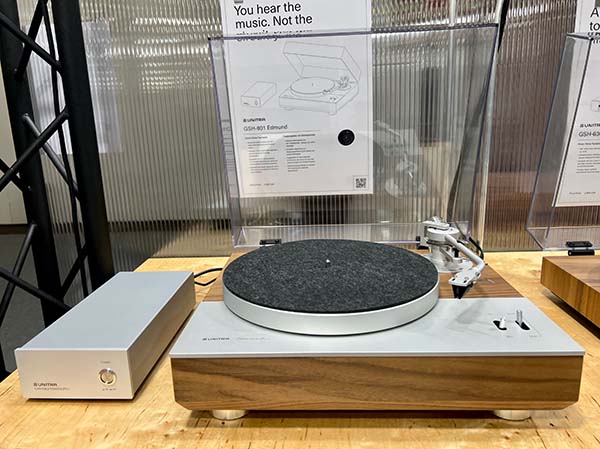
Author bio: Julie Mullins, a lifelong music lover and record collector since age 10 who takes after her audiophile father, is also a contributing editor and reviewer on our sister site, Stereophile, for whom she also writes the monthly Re-Tales column. A former fulltime staffer at Cincinnati’s long-running alt-weekly CityBeat, she programs and hosts a weekly radio show on WAIF called On the Pulse.
For Ken Micallef’s 11½-minute Munich 2025 video diary, which features a wide swath of new turntables, tonearms, and cartridges, go here.
For Part 1 of Julie Mullins’ Munich 2025 show report, go here.
For Part 2 of Julie Mullins’ Munich 2025 show report, go here.
For Part 3 of Julie Mullins’ Munich 2025 show report, go here.
For Part 4 of Julie Mullins’ Munich 2025 show report, go here.
For even more High End Munich 2025 coverage, go here on our sister site Stereophile.
